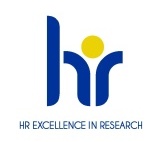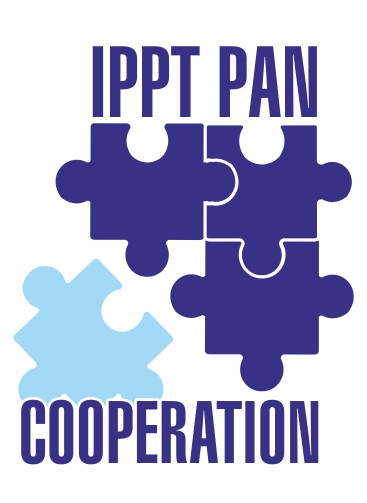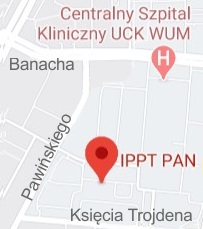| 1. |
Brzeziński J.♦, Watros K.♦, Mańczak M.♦, Owoc J.♦, Jeziorski K.♦, Olszewski R., Readability and source transparency of AI‑generated health information on human metapneumovirus: A comparative evaluation of five chatbots,
Journal of Public Health, ISSN: 1613-2238, DOI: 10.1007/s10389-025-02643-6on., pp.1-8, 2025 Abstract:
Aim This study aimed to evaluate the readability and citation practices of artificial intelligence (AI)-generated responses to questions about human metapneumovirus, a respiratory virus of growing public health concern. Subject and methods Five widely used AI chatbots—ChatGPT-4, Copilot, Gemini,Claude.ai, and Grok—were prompted with 14 standardized questions based on official guidelines from the World Health Organization, the Centers for Disease Control and Prevention, and the Australian National Health and Medical Research Council. Responses were anonymized and assessed using six established readability metrics: Flesch–Kincaid Reading Ease and Flesch–Kincaid Grade Level, Gunning Fog Index, SMOG (Simple Measure of Gobbledygook) Index, Coleman–Liau Index, and Automated Readability Index. Scores were compared to standards recommended by the American Medical Association and the National Institutes of Health. Citation frequency and credibility were also analyzed. Results Among 70 chatbot responses, only one met the recommended readability level. Median readability scores ranged from grade 10.4 to 16.0, indicating high complexity. One chatbot generated the most readable content, while another scored lowest. Only two chatbots included source citations. One cited 68 reliable sources, primarily from health organizations and academic institutions, while the other referenced 31 sources of varying quality. Conclusion AI-generated health content often exceeds recommended readability thresholds and lacks consistent citation practices. These issues may hinder understanding and trust. Improving default readability settings and integrating real-time citation features could enhance the accessibility and credibility of chatbot-based health communication. Keywords:
Human metapneumoviru, Artificial intelligence, Chatbots , Readability Affiliations:
| Brzeziński J. | - | other affiliation | | Watros K. | - | other affiliation | | Mańczak M. | - | National Institute of Geriatrics Rheumatology and Rehabilitation (PL) | | Owoc J. | - | National Institute of Geriatrics Rheumatology and Rehabilitation (PL) | | Jeziorski K. | - | National Institute of Geriatrics Rheumatology and Rehabilitation (PL) | | Olszewski R. | - | IPPT PAN |
|  |
| 2. |
Olszewski R., Watros K.♦, Mańczak M.♦, Owoc J.♦, Jeziorski K.♦, Brzeziński J.♦, Assessing the response quality and readability of chatbots in cardiovascular health, oncology, and psoriasis: A comparative study,
International Journal of Medical Informatics, ISSN: 1386-5056, DOI: 10.1016/j.ijmedinf.2024.105562, Vol.190, No.105562, pp.1-7, 2024 Abstract:
Background: Chatbots using the Large Language Model (LLM) generate human responses to questions from all
categories. Due to staff shortages in healthcare systems, patients waiting for an appointment increasingly use
chatbots to get information about their condition. Given the number of chatbots currently available, assessing the
responses they generate is essential.
Methods: Five chatbots with free access were selected (Gemini, Microsoft Copilot, PiAI, ChatGPT, ChatSpot) and
blinded using letters (A, B, C, D, E). Each chatbot was asked questions about cardiology, oncology, and psoriasis.
Responses were compared to guidelines from the European Society of Cardiology, American Academy of
Dermatology and American Society of Clinical Oncology. All answers were assessed using readability scales
(Flesch Reading Scale, Gunning Fog Scale Level, Flesch-Kincaid Grade Level and Dale-Chall Score). Using a 3-
point Likert scale, two independent medical professionals assessed the compliance of the responses with the
guidelines.
Results: A total of 45 questions were asked of all chatbots. Chatbot C gave the shortest answers, 7.0 (6.0 – 8.0), and Chatbot A the longest 17.5 (13.0 – 24.5). The Flesch Reading Ease Scale ranged from 16.3 (12.2 – 21.9)
(Chatbot D) to 39.8 (29.0 – 50.4) (Chatbot A). Flesch-Kincaid Grade Level ranged from 12.5 (10.6 – 14.6) (Chatbot A) to 15.9 (15.1 – 17.1) (Chatbot D). Gunning Fog Scale Level ranged from 15.77 (Chatbot A) to 19.73 (Chatbot D). Dale-Chall Score ranged from 10.3 (9.3 – 11.3) (Chatbot A) to 11.9 (11.5 – 12.4) (Chatbot D).
Conclusion: This study indicates that chatbots vary in length, quality, and readability. They answer each question
in their own way, based on the data they have pulled from the web. Reliability of the responses generated by
chatbots is high. This suggests that people who want information from a chatbot need to be careful and verify the answers they receive, particularly when they ask about medical and health aspects. Keywords:
Chatbots,Readability,Cardiovascular health,Oncology Affiliations:
| Olszewski R. | - | IPPT PAN | | Watros K. | - | other affiliation | | Mańczak M. | - | National Institute of Geriatrics Rheumatology and Rehabilitation (PL) | | Owoc J. | - | National Institute of Geriatrics Rheumatology and Rehabilitation (PL) | | Jeziorski K. | - | National Institute of Geriatrics Rheumatology and Rehabilitation (PL) | | Brzeziński J. | - | other affiliation |
|  |
| 3. |
Olszewski R., Watros K.♦, Brzeziński J.♦, Owoc J.♦, Mańczak M.♦, Targowski T.♦, Jeziorski K.♦, COVID-19 health communication strategies for older adults: Chatbots and traditional media,
Advances in Clinical and Experimental Medicine, ISSN: 2451–2680, DOI: 10.17219/acem/195242, pp.1-9, 2024 Abstract:
Background. The coronavirus disease 2019 (COVID-19) pandemic has significantly accelerated the development and use of new healthcare technologies. While younger individuals may have been able to quickly embrace virtual advancements, older adults may still have different needs in terms of health communication.
Objectives. To identify areas of interest and preferred sources of information related to the COVID-19 pandemic among older adults and to verify their eHealth competencies.
Materials and methods. The study was conducted between February 2022 and July 2022. It included listeners from the University of the Third Age (U3A) and younger students. Both groups received information about the HealthBuddy+ chatbot, a questionnaire that addressed respondents’ interests about COVID-19, and the PL-eHEALS (eHealth Literacy Scale) questionnaire to measure their eHealth competencies.
Results. There were 573 participants in the study (U3A listeners – 303 participants, median age: 73 years (interquartile range (IQR): 69–77); young adult students – 270, median age: 24 years (IQR: 23–24). The primary source of information about COVID-19 for older adults was television (84.5%), and for younger adults, internet (84.4%). Among the older adults, only 17% ever interacted with a chatbot (younger adults – 78% respectively), and 19% considered it a trustworthy source of information on COVID-19 compared to 79% of younger respondents. Older adults and younger adults in our study were most interested in COVID-19 treatment methods (45.5% and 69.3%, respectively), symptoms of the disease (36.6% and 35.2%, respectively) and chronic diseases coexisting with COVID-19 (35.0% and 51.5%, respectively). However, their eHealth competencies were generally low (median (Me): 34; IQR: 30–39) compared to younger adults (Me: 42; IQR: 40–47).
Conclusions. Health education for older adults should be appropriately tailored to their current needs and differentiated. The level of eHealth competencies of older adults suggests that much work remains to narrow the gap between the eHealth competencies of the younger and older generations. Keywords:
health education,older adults,information seeking,COVID-19 Affiliations:
| Olszewski R. | - | IPPT PAN | | Watros K. | - | other affiliation | | Brzeziński J. | - | other affiliation | | Owoc J. | - | National Institute of Geriatrics Rheumatology and Rehabilitation (PL) | | Mańczak M. | - | National Institute of Geriatrics Rheumatology and Rehabilitation (PL) | | Targowski T. | - | National Institute of Geriatrics, Rheumatology and Rehabilitation (PL) | | Jeziorski K. | - | National Institute of Geriatrics Rheumatology and Rehabilitation (PL) |
|  |
| 4. |
Jannasz I.♦, Brzeziński J.♦, Mańczak M.♦, Sondej T.♦, Targowski T.♦, Rysz J.♦, Olszewski R., Is the association between Pulse Wave Velocity and Bone Mineral Density the same for men and women? - a systematic review and meta-analysis,
Archives of Gerontology and Geriatrics, ISSN: 0167-4943, DOI: 10.1016/j.archger.2023.105309, pp.1-23, 2023 Abstract:
Brachial aortic Pulse Wave Velocity (baPWV) and bone mineral density (BMD) are important indicators of cardiovascular health and bone strength, respectively. However, the gender-specific association between baPWV and BMD remains unclear. The aim of our study is to evaluate the relationship between baPWV and
BMD in men and women populations Methods: A comprehensive search was conducted in electronic databases for relevant studies published between the 1th and 30rd of April 2023. Studies reporting the correlation between baPWV and BMD in both males and
females were considered. A random-effects model was used to calculate pooled correlation coefficients (r). Results: Relevant data for both genders were found in six articles. In all publications included in the meta-analysis, the total number of studied individuals was 3800, with 2054 women and 1746 men. Pooled correlation coefficient was -0,24 (95% CI: -0.34; -0.15) in women population, and -0.12 (95%CI: -0.16, -0.06) in
men. Conclusions: Based on the published data, we found that baPWV is negatively correlated with bone density in women. However, in men we do not find such a
relationship. These findings suggest the importance of considering gender-specific factors when assessing the cardiovascular and bone health relationship. Keywords:
Bone mineral density, osteoporosis, brachial aortic Pulse Wave Velocity, arterial stiffness, gender differences Affiliations:
| Jannasz I. | - | other affiliation | | Brzeziński J. | - | other affiliation | | Mańczak M. | - | National Institute of Geriatrics Rheumatology and Rehabilitation (PL) | | Sondej T. | - | Military University of Technology (PL) | | Targowski T. | - | National Institute of Geriatrics, Rheumatology and Rehabilitation (PL) | | Rysz J. | - | Medical University of Lodz (PL) | | Olszewski R. | - | IPPT PAN |
|  |



















